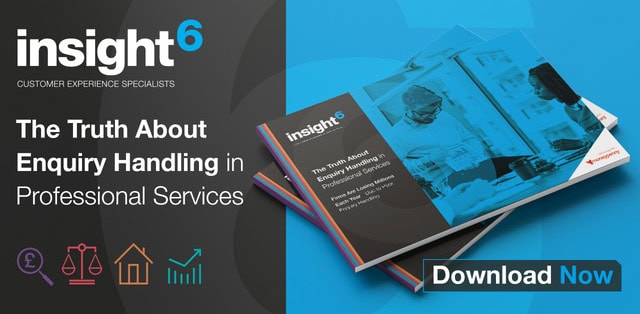How Technology is Transforming the Customer Experience: AI, Chatbots and Beyond
Artificial Intelligence (AI) in customer experience is no longer a futuristic concept; it’s here, and it is shaping the way customers engage with businesses today.
From chatbots answering queries in seconds to predictive tools spotting issues before they escalate, technology is redefining service expectations across every sector. Yet, while tools like AI assistants promise speed and scale, businesses must strike a balance between efficiency and empathy to build trust and loyalty.
Recent research indicates that nearly half of consumers have experienced poor service in the past year. With competition fierce and expectations rising, companies that do not adapt will lose customers to more responsive rivals.
Understanding how AI in Customer Experience (CX) works and where it adds the most value is critical for leaders, managers, and teams today. Here, we examine the role of AI in customer experience.
Table of Contents
- What does “AI in Customer Experience” actually mean?
- The building blocks powering modern CX
- Chatbots and AI assistants: where they work best today
- Beyond chat – how AI personalises and streamlines journeys
- Proving value: metrics and measurement
- Risks, ethics and trust in an AI-enabled CX
- Implementation roadmap: from pilot to scale
- Sector snapshots and use cases
- Conclusion: blending human expertise with AI for better experiences
What does “AI in Customer Experience” actually mean?
AI in customer experience is where artificial intelligence is used to enhance, personalise, and scale the way customers interact with your business.
Unlike traditional automation, which follows fixed rules, AI in CX learns from data and adapts over time. It powers experiences that feel more human-like, even when no person is directly involved.
Where does AI show up today?
- Customer service: AI chatbots and voicebots resolve FAQs, track orders, and manage bookings.
- Sales and marketing: Recommendation engines suggest relevant products or services, while AI-driven journeys tailor brand messages to individual users.
- Analytics and insights: AI analyses patterns across customer data platforms (CDPs) or CRMs to spot opportunities and risks.
- Fraud prevention and security: AI helps verify identities, detect anomalies, and protect customers.
- Operations and field service: Predictive tools optimise scheduling, dispatch, and resource allocation.
The outcomes businesses can expect from AI for CX include:
- Speed – customers get answers instantly.
- Personalisation – journeys adapt to individual needs and preferences.
- Consistency – every interaction reflects the same standards.
- Insight – leaders gain a clearer view of what customers really think and do.
- Efficiency – lower cost to serve without cutting quality.
At its best, AI augments rather than replaces the human touch, allowing teams to focus more on complex, emotional, or high-value conversations.
The building blocks powering modern CX
AI in customer experience is only as strong as the foundations it sits on.
Behind every seamless chatbot, predictive service, or personalised message lies a set of interconnected technologies and safeguards.
For leaders considering their next CX investment, it’s essential to understand the core building blocks:
Data foundations: Customer Data Platforms (CDPs) and CRMs sit at the heart of modern CX. They unify customer profiles, manage consent, and enable identity resolution across multiple touchpoints. Without accurate, permission-based data, even the most advanced AI models will struggle to deliver value.
Models and engines: AI for CX relies on engines that can predict, generate, and recommend. Predictive models forecast customer needs, while generative AI can draft responses or content. Recommendation systems tailor offers, and speech/vision models unlock new interfaces.
Interfaces: These are how customers “meet” AI. Whether through chatbots, voicebots, IVR menus, in-app assistants, email responders, or messaging platforms, the interface defines the experience. For example, our work with Arnold Clark has demonstrated how tools like video mystery shopping enable businesses to experience these journeys exactly as customers do.
Guardrails: Security, privacy, and compliance must be baked in. Equally important are “human in the loop” mechanisms that ensure escalation when required. Technology should never compromise brand values or trust – it should reinforce them.
When all four layers align, CX technology moves beyond simple automation to deliver meaningful, responsible improvements that customers notice and appreciate.

Chatbots and AI assistants: where they work best today
Chatbots for customer service are most effective when they resolve simple issues promptly and seamlessly transition to a human agent when necessary.
AI assistants are no longer just novelty add-ons; they’re mainstream tools for scaling service without increasing headcount. The key is knowing where they add value and where human expertise remains essential.
High-fit use cases
Chatbots shine in situations where the task is straightforward and repeatable. Common examples include:
- Answering FAQs
- Checking order or booking status
- Processing simple account updates
- Triaging service requests
- Guiding customers through troubleshooting steps
- Retrieving knowledge articles quickly
These interactions can be resolved in seconds, leaving staff to concentrate on complex or sensitive cases.
The importance of hand-offs
The risk with automated customer support is that customers feel trapped in “bot loops.” The best designs include a clear, smooth escalation to a live agent. Doing so protects customer satisfaction (CSAT) and ensures compliance in regulated industries. At insight6, our mystery shopping programmes often reveal how businesses succeed – or fail – at these crucial hand-off moments.
Designing prompts, intents and guardrails
Chatbots and AI assistants need careful configuration. Effective intent recognition, safe prompting, and fallback options ensure accuracy and reliability. Guardrails, such as human-in-the-loop safeguards, prevent reputational damage from inaccurate or inappropriate outputs.
A note on agentic AI
We’re also seeing the emergence of agentic AI – systems that can take actions across multiple platforms, not just answer questions. While powerful, these require rigorous oversight and clear policies to avoid errors or breaches.
Used thoughtfully, chatbots and AI assistants can boost efficiency, lower cost to serve, and make service available around the clock – while still respecting the human side of customer relationships.
Beyond chat – how AI personalises and streamlines journeys
AI in customer experience isn’t just about faster responses – it’s about tailoring every step of the journey.
While chatbots dominate headlines, the fundamental transformation lies in how AI personalises, predicts, and orchestrates experiences across all touchpoints.
Majority of UK shoppers see brand messages as irrelevant
Source: CMO Tech – data from Infobip in partnership with Retail Economics
Hyper-personalisation and recommendations
Customers expect brands to “know” them – but research shows that 61% of UK shoppers still find brand messages irrelevant. AI personalisation addresses this gap by analysing behaviours, preferences, and context in real time.
- Product and content recommendations adapt dynamically.
- Next-best-action models suggest offers that reflect individual needs.
- Campaigns become less about mass messaging and more about meaningful relevance.
Done well, this boosts engagement and loyalty. Done poorly, it feels intrusive – highlighting the need for accurate data and careful governance.
Proactive and predictive service
Rather than waiting for complaints, predictive customer service anticipates problems before they surface.
- Airlines and hospitality providers use AI to flag potential delays or disruptions, sending proactive updates.
- Field service teams can optimise routes and schedules, reducing missed appointments.
- Businesses can notify customers of renewals or maintenance needs before they even ask.
This shift from reactive to proactive builds trust and saves costs by preventing escalations.
Voice and contact centre intelligence
AI in contact centres doesn’t replace agents – it supports them.
- Real-time agent assist tools suggest following responses, retrieve knowledge, or flag compliance risks.
- Automated summarisation reduces after-call admin, freeing up time.
- Sentiment analysis enables supervisors to monitor tone and intervene when necessary.
The result? Better conversations, shorter handling times, and improved employee satisfaction.
Journey orchestration
AI enables businesses to test and adapt customer journeys in real-time across multiple channels. Instead of static funnels, journeys evolve dynamically based on customer signals. For example, suppose a prospect drops off during an enquiry. In that case, AI can trigger follow-up support – something highlighted in our Professional Services Client Journey Report, where many firms still fail to respond to initial enquiries.
Journey orchestration means customers experience a brand that feels responsive and consistent, regardless of how or where they engage.

Proving value: metrics and measurement
AI in customer experience should measure against outcomes, not hype.
The promise of AI is only meaningful if it delivers tangible improvements in satisfaction, efficiency, and growth. That’s why businesses need a clear framework of CX metrics to track success.
What to track by use case
First Response Time (FRT): how quickly a chatbot or agent replies.
Average Handling Time (AHT): time taken to resolve an interaction.
Containment/Deflection Rate: percentage of issues resolved by AI without human intervention.
CSAT and NPS: customer-reported satisfaction and loyalty. (Read our guide to the top CX metrics.)
Customer Effort Score (CES): how easy customers find the process.
Conversion and Churn: the ultimate test of whether AI drives growth or retention.
Cost to Serve: operational savings compared to traditional models.
How to measure effectively
Controlled experiments: Run A/B tests comparing AI-supported vs. traditional service.
Set baselines: Measure current FRT, AHT or CSAT before rolling out AI.
Avoid attribution traps: Improvements often result from a mix of AI and process changes – measure both.
Setting realistic timeframes
AI performance improves as systems learn from increasingly larger datasets. Businesses should expect gradual gains, not instant transformation. Early wins may include reduced response times, while longer-term benefits show in loyalty and revenue.
At insight6, our instant insight feedback system helps businesses capture live customer reactions to measure the actual impact of technology on satisfaction and loyalty.
Risks, ethics, and trust in an AI-enabled CX
With AI in customer experience, the most significant risk isn’t failure – it’s losing customer trust.
While the opportunities are significant, so are the pitfalls if businesses deploy AI without care.
Accuracy and bias
AI can generate confident but incorrect responses (“hallucinations”) or reflect bias in the data training. The result? Misinformation, unfair treatment, or reputational damage. Regular testing and red-teaming are essential safeguards.
Brand safety and privacy
Every AI interaction represents your brand. If customers feel their data is mishandled or misused, loyalty can vanish overnight. Clear policies on consent, data residency, and minimisation are non-negotiable.
Transparency and human in the loop
Customers value honesty. That means disclosing when they are dealing with AI and providing them with clear opt-outs. For complex or vulnerable situations, a human in the loop is vital to ensure empathy, judgment and compliance.
Operational safeguards
Responsible AI means building operational playbooks:
- Fallback paths when systems fail.
- Escalation protocols for sensitive scenarios.
- Continuous review and monitoring of outputs.
At insight6, we often work with partners like Moneypenny to design customer contact models that combine the efficiency of AI with the reassurance of a real person. This “best of both worlds” approach maintains service quality while scaling capacity.
Handled responsibly, AI strengthens relationships. Managed poorly, it risks undermining the very trust businesses are trying to build.
Implementation roadmap: from pilot to scale
Successful AI in customer experience starts small, learns fast, and scales responsibly.
Rolling out AI isn’t just about switching on a chatbot – it requires precise planning, governance, and cultural alignment. Here’s a proven path:
- Define the business problem and success metrics. Be specific: is the goal to cut enquiry response time, reduce call volume, or improve CSAT? Clarity here sets the benchmark for impact.
- Audit data and knowledge bases: Clean, accessible data is critical. Outdated FAQs or fragmented CRMs undermine AI performance.
- Prioritise one or two high-impact use cases: Focus on areas like FAQs or booking updates where ROI is fast and customer value is clear.
- Design conversation flows and escalation paths: Map out how the AI interacts with customers, and when it should hand over to a human.
- Launch a controlled pilot with monitoring: Test in a limited environment, tracking containment, CSAT, and error rates.
- Train teams and update SOPs: AI works best when staff understand its role and purpose. Training reduces resistance and ensures alignment with culture.
- Scale and integrate with journey orchestration: Once proven, expand use cases and embed AI across channels to create a seamless customer journey.
Vendor selection checklist
When choosing providers, consider:
- Data security and compliance.
- Proven track record in your sector.
- Ability to integrate with your CRM/CDP.
- Transparent governance and reporting.
RACI snapshot
- Responsible: CX manager or service lead.
- Accountable: Executive sponsor.
- Consulted: IT, compliance, and frontline staff.
- Informed: Wider business teams.
With the proper roadmap, businesses can move from experimentation to AI-enabled journeys that consistently enhance satisfaction and reduce cost to serve.
Sector snapshots and use cases
AI in customer experience looks different across industries – but the principles remain the same.
Every sector faces unique challenges, yet all can benefit from carefully chosen AI applications that improve response, personalisation, and efficiency.
Professional services: In legal and accountancy firms, enquiry handling is a persistent pain point. Our Professional Services Client Journey Report revealed that over 70% of prospects never receive a reply after their first contact. AI-powered triage and intelligent routing can avoid missed enquiries, while predictive follow-ups help nurture relationships.
Retail and e-commerce: From recommendation engines suggesting the best product to chatbots providing 24/7 order updates, AI is now a staple of retail CX. Our work with Arnold Clark demonstrates how tools like video mystery shopping allow businesses to experience their digital and in-person journeys exactly as customers do, pinpointing where AI can add the most value.
Hospitality: Hotels and restaurants are adopting AI for reservations, guest preferences, and predictive service. Voice assistants can personalise in-room experiences, while proactive notifications keep guests informed about check-in or dining availability. The human touch remains central, but AI ensures smoother and faster service.
Our work with Edgbaston Park Hotel demonstrates how effective enquiry handling and mystery shopping can enhance guest satisfaction, even without the use of AI. Adding AI on top of these solid foundations could take personalisation and responsiveness even further.

Conclusion: blending human expertise with AI for better experiences
AI in customer experience works best when it augments people, rather than replacing them.
Used responsibly, AI can speed up enquiry handling, personalise journeys, and predict issues before they escalate. The result is a lower cost to serve, higher customer satisfaction, and teams freed up to focus on what humans do best: empathy, judgment, and building relationships.
At insight6, we’re not AI vendors, but we are experts in understanding customer journeys. Through tools like mystery shopping and instant feedback, we help businesses map the customer journey, identify pain points, and pinpoint where people and technology can deliver significant value. That way, organisations can embrace AI opportunities without losing sight of the human connection at the heart of excellent service.
If you’d like to explore how to improve your customer journeys and where technology might fit, book a consultation with your local CX specialist.
—
At insight6, we work with over 1,200 businesses, offering tailored solutions to transform CX from end to end. To connect with your local CX Specialist, call +44 (0)800 970 8987 or visit www.insight6.com
Sign up for the insight6 newsletter to stay ahead with the latest CX strategies and insights.



0 Comments